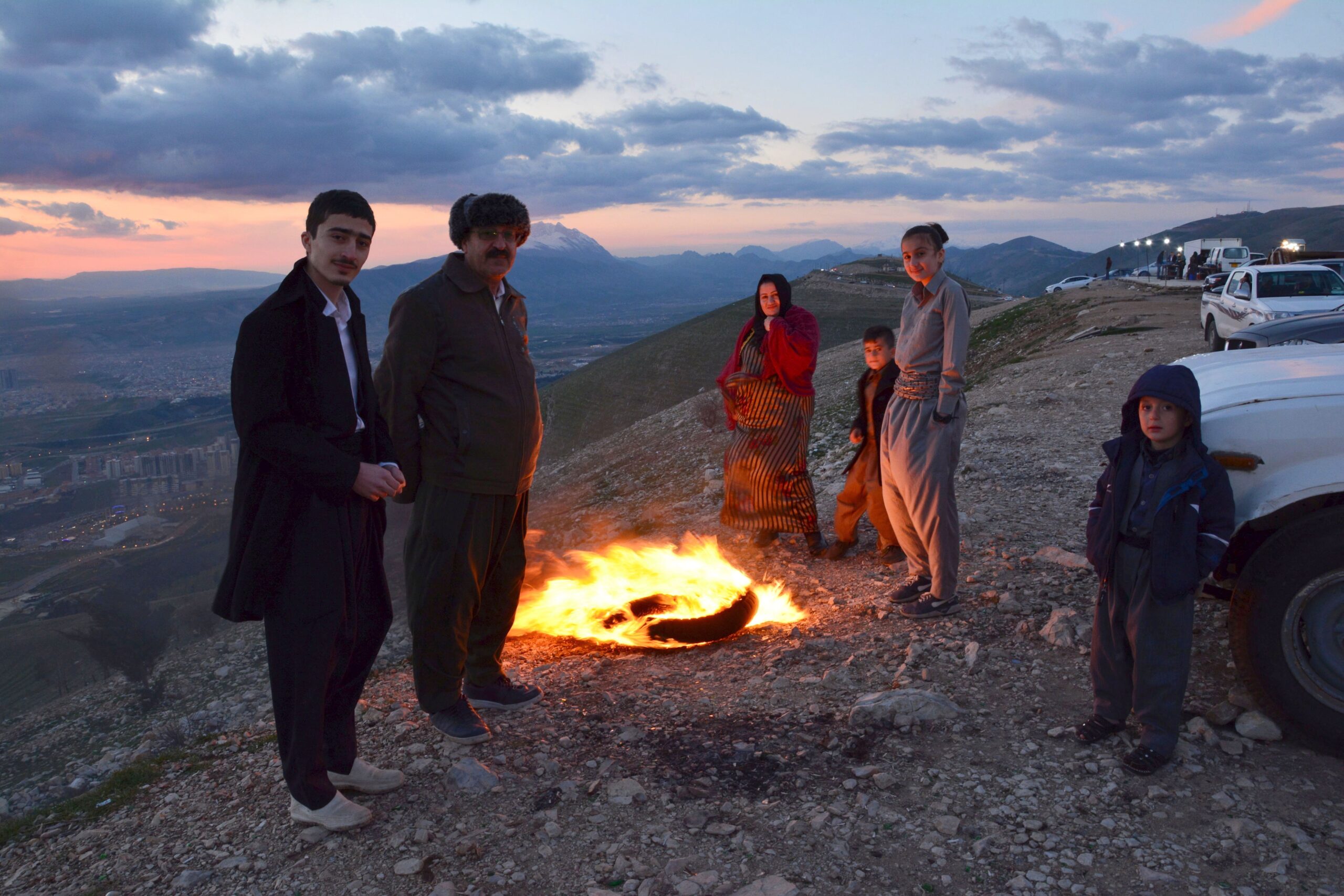EQUAL TIMES (27/3/2019)
On 20 March 2019, families and groups of friends gathered at sunset in the mountains surrounding Sulaymaniya in Iraqi Kurdistan. Wearing traditional Kurdish clothes, many sat on picnic blankets, some danced to the sound of popular music, while others gathered to talk around bonfires.
With the Kurdish New Year of 2719 fast-approaching, the sound of fireworks grew louder in the mountains overlooking Iraqi Kurdistan’s second largest city.
The first day of spring marks the New Year, known as ‘Newroz’ in Kurdish, which means ‘new day’ (it is also known as ‘Nowruz’ in Persian). Observed in many countries in the Middle East and central Asia, Newroz holds special importance to Kurdish people and is their most significant annual festival.
“Newroz is a celebration of spring and the New Year,” says Rozhim Ahmed, who drove to the mountains with her friends to mark the event. “But it is also a celebration of the struggles of Kurds and a celebration of victory over oppression.”
The Kurdish New Year begins when winter turns into spring on the March equinox. Across Kurdish regions, the festival commemorates the myth of Kawa, a blacksmith who rebelled against the evil King Zuhak and freed his people from oppression.
According to the legend, spring no longer came because of Zuhak’s reign of injustice. The blacksmith Kawa led an uprising against the tyrannical king, defeating him on the eve of Newroz. On the next day spring returned to Kurdistan.
To celebrate his victory, Kawa lit a fire on a mountaintop. The fire announced the end of oppression in the kingdom. And now, every year, 20 March is celebrated as the day Kawa defeated Zuhak. The following day is marked as New Year’s Day and the first day of spring.
Lighting bonfires and torches on Newroz is a common Kurdish
Read more:https://www.equaltimes.org/newroz-brings-hope-of-a-brighter#.XJ3Ys1UzbIU
